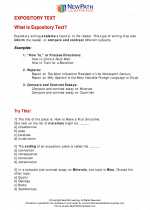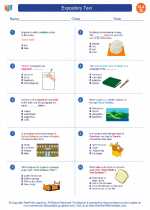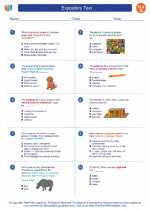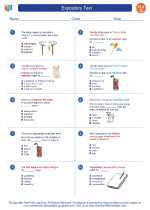Expository Text
Expository text is a type of writing that is used to inform, describe, explain, or define information. It is non-fiction writing that aims to provide information, rather than tell a story or entertain the reader. Expository text is commonly found in textbooks, newspapers, magazines, and informational websites. It typically includes features such as headings, subheadings, bullet points, and diagrams to help organize and convey information effectively.
Characteristics of Expository Text
- Informational: Presents facts, statistics, and evidence to inform the reader about a specific topic.
- Objective: Focuses on presenting information in a neutral and unbiased manner, without expressing the author's opinion or emotions.
- Structured: Often organized using headings, subheadings, and other visual aids to help readers easily locate and understand key information.
- Clarity and Precision: Uses clear and precise language to explain complex concepts and make the information easily understandable for the reader.
- Examples and Evidence: Includes specific examples, evidence, and supporting details to back up the main points being made.
Study Guide for Expository Text
When studying expository text, it's important to pay attention to the following key elements:
1. Main Idea and Supporting Details
Identify the main idea of the text and look for supporting details that explain or elaborate on the main idea. Understanding the relationship between the main idea and supporting details is crucial for comprehending expository text.
2. Text Structure
Examine the organizational structure of the text. Look for headings, subheadings, and other text features that help to organize the information. Identify how the text is structured and how that structure contributes to the overall understanding of the topic.
3. Vocabulary and Definitions
Pay attention to any unfamiliar vocabulary words and their definitions within the text. Understanding the meaning of key terms is essential for grasping the content of expository text.
4. Examples and Evidence
Take note of any examples and evidence provided in the text to support the main points being made. Understanding how examples and evidence are used helps in comprehending the validity of the information presented.
5. Summarization
Practice summarizing the main ideas and key points of the expository text in your own words. Summarization helps reinforce understanding and retention of the information.
By paying attention to these elements and practicing close reading of expository texts, you can improve your comprehension and analysis of informational writing.
.◂English Language Arts Worksheets and Study Guides Seventh Grade. Expository Text

 Worksheet/Answer key
Worksheet/Answer key
 Worksheet/Answer key
Worksheet/Answer key
 Worksheet/Answer key
Worksheet/Answer key
